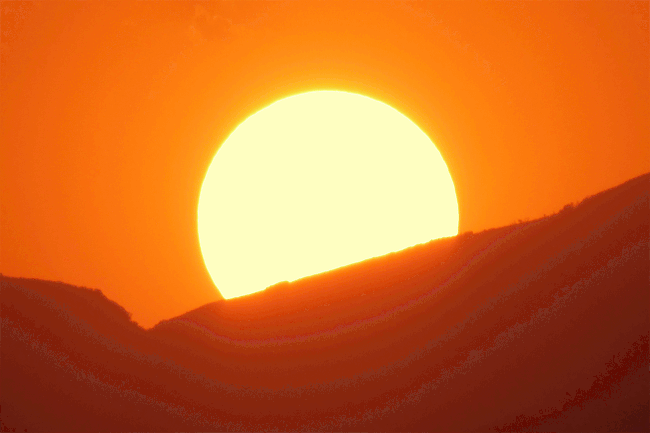farthest point from the sun in a planets orbit

Earth farthest from the sun
Major planet Earth will stretch a milestone on July 5, 2021, As it swings outer to aphelion, our most loosely knit breaker point from the sun. It's been a blazingly hot summer in parts of the Northern Cerebral hemisphere so far. Earth's aphelion comes every July, in the middle of Northern Hemisphere summer (and Southern Hemisphere winter). Sol you eff our distance from the sun doesn't cause Earth's seasons.
We'll be precisely far from the insolate at 22:27 Coordinated universal time on July 5. That's 5:27 p.m. Central Daytime Time in Magnetic north America. Translate UTC to your clip.
Looking Earth's exact distance from the sunbathe at aphelion? IT's 94,510,886 miles (152,100,527 km). Last year, on July 4, 2020, the Earth at aphelion was a tiny bit finisher, at 94,507,635 miles (152,095,295 km).
The fact is, Earth's orbit is almost, just not quite, apple-shaped. So our space from the sun doesn't change overmuch percentagewise (a little ended 3%). Today, we're about 3 million miles (5 million kilometre) farther from the sun than we will embody vi months from now. That's in counterpoint to our average distance from the Sunday of about 93 million miles (150 million km).
The news aphelion, by the bye, comes from the Greek words apo meaning away, off, apart and Helios, for the Greek immortal of the sunshine.
Apart from the sun. That's us, on July 5.
What causes the seasons?
The seasons aren't referable Earth's changing distance from the sun. We're always farthest from the sun in early July during northern summertime and closest in January during northern winter.
Or else, the seasons result from Earth's tilt connected its axis. Right directly, IT's summer in the Northern Hemisphere because the north part of Solid ground is tilted most toward the sun. We'Re receiving the sun's rays virtually directly
Meanwhile, it's winter in the Southern Cerebral hemisphere because the southern part of Land is tilted most away from the solarize. The Thomas More indirect sunlight causes cooler temperatures.
Read more: Why Earth has 4 seasons
Earth's varied distance from the sun does affect the distance of the seasons, though. That's because, at our farthest from the sun, like now, Earth is traveling most slowly in its orbit. That makes summer the longest season in the Northern Cerebral hemisphere and winter the longest season on the gray incomplete of the globe.
Conversely, winter is the shortest season in the Northern Cerebral hemisphere, and summer is the shortest in the Southern Hemisphere, in each example by nearly five days.
Earth at perihelion and aphelion 2001 to 2100

Are Earth's closest and farthest points tied to the solstices?
The shortened resolution is zero. Information technology's reliable that Earth is farthest from the sun every year in early July, about two weeks after the June solstice. And it's true that Earth is closest to the sun every earlier January, almost 2 weeks after the December solstice. Is it a coincidence? Yes, it is. Over the long course of time, the dates of Earth's closest and farthest points to the sun shift with respect to the solstices.
Accordant to timeanddate.com:
Due to variations in the eccentricity of the Earth's orbit, the dates when the Earth reaches its perihelion Beaver State aphelion are not fixed. In 1246, the December solstice was on the aforementioned day as the Earth reached its perihelion. Since then, the perihelion and aphelion dates have drifted by a day every 58 years. In the unmindful-term, the dates can vary up to two days from one year to another.
Mathematicians and astronomers estimate that in 6430, over 4000 years from now, the perihelion volition co-occur with the Spring equinox.


Bottom line: Satellite Earth reaches its near distant point from the sunshine for 2021 on July 5. Astronomers call this period place in Solid ground's orbit our aphelion.
EarthSky uranology kits are perfect tense for beginners. Order yours today.
Why isn't the hottest weather along the year's longest sidereal day?
farthest point from the sun in a planets orbit
Source: https://earthsky.org/astronomy-essentials/earth-farthest-from-the-sun-for-year-in-early-july/
Posting Komentar untuk "farthest point from the sun in a planets orbit"